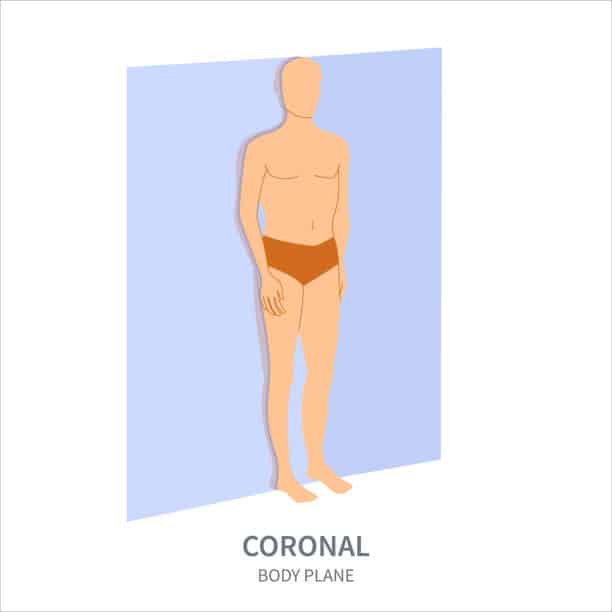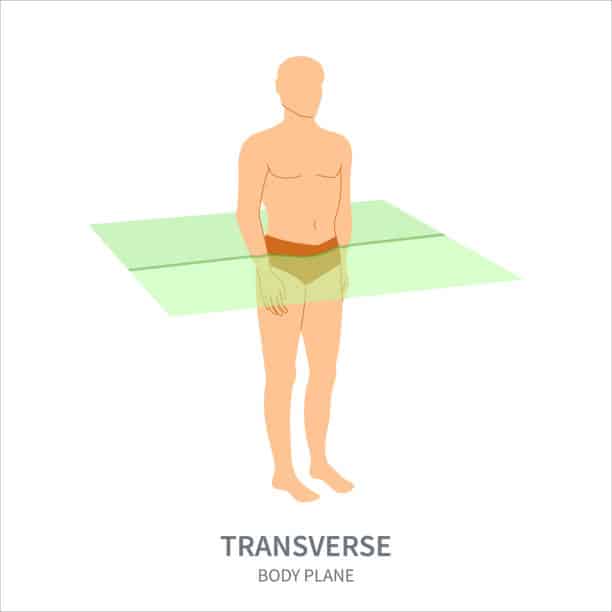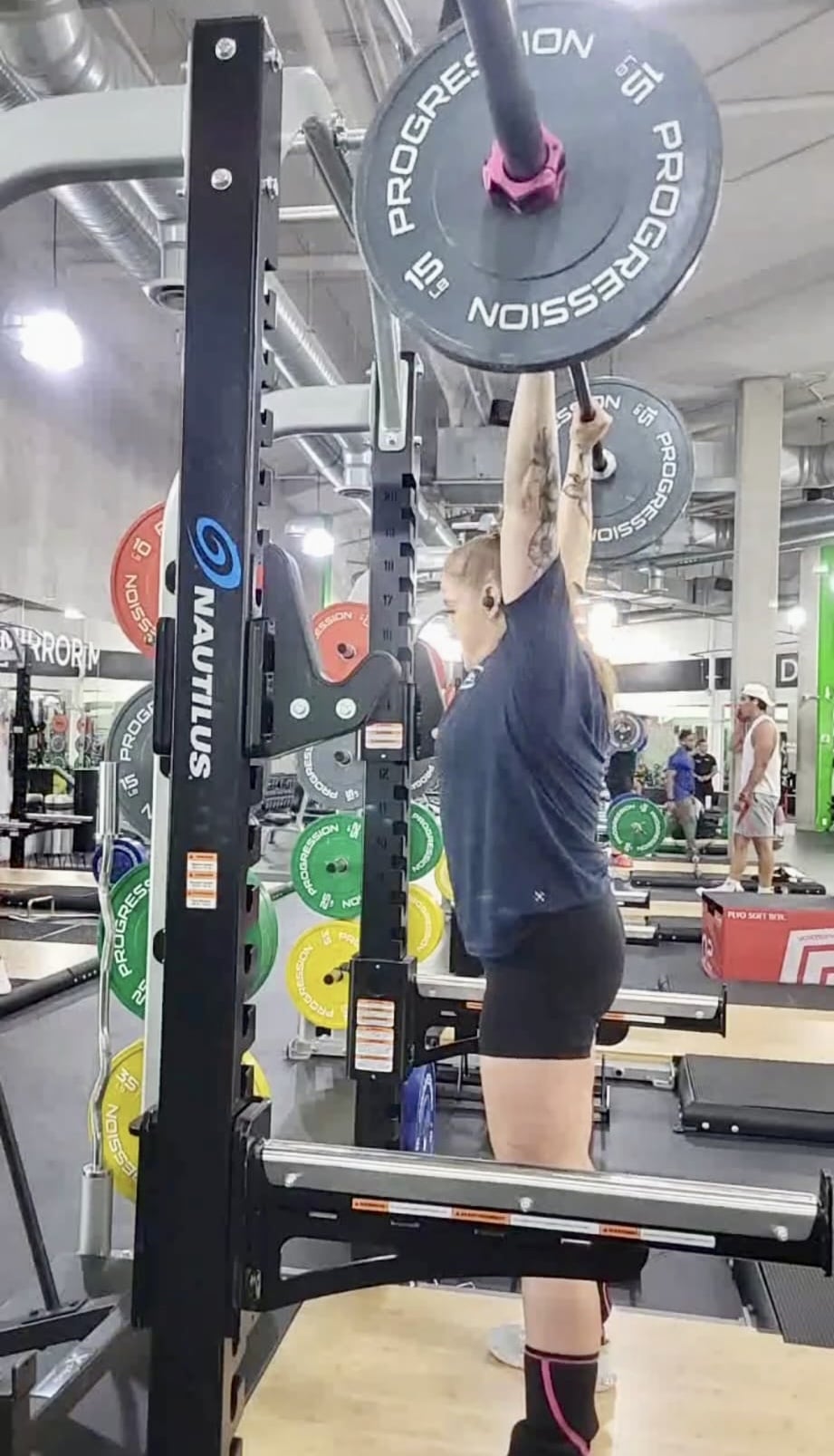December 6, 2023
Unleash Your Core Power: A Guide to Frontal and Transverse Plane Core Exercises
In our previous blog post (you can read that here if you missed it), we discussed unlocking the anterior chain core, essentially what we understand as our abs. Most exercises tended to focus on crunches, sit ups and other similar exercises that let the user “feel” their abs while doing it but only utilize one aspect of core training.
Embarking on a fitness journey goes beyond sculpting a chiseled midsection; it’s about cultivating a foundation of strength and stability. Core stability is the secret weapon that not only enhances your physique but also fortifies your body against injury and supports optimal performance in daily life. We’ll explore the often-overlooked frontal (aka coronal) and transverse planes, introducing exercises that not only build a robust core but also elevate your functional strength and stability.
What’s the deal with the coronal and transverse plane?
Frontal and transverse plane may not be terms that you’re familiar with so we’ll give a quick rundown to better understand how training in those planes can lead to improved results.

Frontal (aka Coronal) Plane: Dividing the body into front and back halves, this plane engages lateral movements, working muscles responsible for side-to-side motions.
Targeted muscles: Obliques, hip abductors, and adductors.
Benefits:
– Enhanced lateral stability and balance for improved functional movements.
– Greater stability in side-to-side activities, reducing the risk of injury.
– A solid foundation for overall core stability.
Negatives of Neglecting Frontal Plane Training:
– Increased vulnerability to lateral instability and injuries during daily activities.
– Impaired lateral stability affecting overall core stability.
– Potential imbalance in core strength.

Transverse Plane: Dividing the body into upper and lower halves, the transverse plane involves rotational movements, engaging muscles responsible for twisting motions.
Targeted muscles: Internal and external obliques, deep core muscles.
Benefits: Improved rotational strength for sports and functional daily activities.
– Enhanced spinal mobility and flexibility, contributing to overall movement proficiency.
– Elevated core stability for a solid foundation in functional strength.
Negatives of Neglecting Transverse Plane Training:
– Limited ability to perform rotational movements, compromising overall stability.
– Increased risk of lower back strain during twisting motions.
– Incomplete core stability, impacting functional strength.
How does Core Strength & Stability matter?
Core Strength refers to the ability of the muscles in the core – encompassing the abdomen, lower back, hips, and pelvis – to generate force and work synergistically. It goes beyond the aesthetics of 6 pack abs and involves the muscles to produce controlled movements, resist external forces (gravity/weight/load), and stabilize the spine during various activities. Developing core strength contributes to improved athletic performance, enhanced functional movements, and a reduced risk of injuries.
- Core muscles are involved in breathing and provide support for vital organs, ensuring optimal respiratory function.
- Adequate core strength facilitates a broader range of motion in various joints, beneficial for activities requiring flexibility.
- A strong core enhances the transfer of energy between the upper and lower body, improving overall movement efficiency.
- Core strength serves as a cornerstone for overall fitness, enhancing the ability to engage in and excel at diverse forms of exercise.
Core Stability is the capacity of the core muscles to maintain a solid, well-supported foundation, reducing unwanted movements or deviations in the spine;
- It involves isometric contractions, where the core muscles engage to resist external forces and provide a stable platform for dynamic actions.
- Core stability is vital for maintaining proper posture, preventing back pain, and ensuring optimal alignment during exercises and daily activities.
- It acts as the cornerstone for overall body stability, allowing efficient energy transfer and minimizing the risk of injuries.
- Core stability is the linchpin for efficient movement patterns in daily life.
- A stable core enhances the effectiveness of functional movements, from bending to lifting and twisting.
In essence, while core strength involves generating force, core stability focuses on maintaining a controlled and stable center. Together, they form the basis for a resilient and functional core. Now, let’s hit that core!
Windmill
1. Hold the weight with arms locked out with your gaze on your hand with feet about hip width and the foot of the opposite side you’re holding the weight in is turned out
2. Push your hip out to the same side (like you have attitude) as the arm holding the weight
3. While keeping your legs straight, hinge down towards the ground stopping where your range of motion allows. You don’t have to touch the ground.
4. Focus on keeping everything stacked before returning to the top.
Side Plank (Short/Long lever)
Side Planks are one of the more common frontal plane exercises and are very versatile in progressing or regressing to match your fitness level. The video demonstrates 2 variations.
1. Start with the elbow stacked under the shoulder with the bottom leg bent, top leg long. This is an assisted version of the side plank that would be considered easier than both legs out and harder than both legs bent.
2. Push the elbow into the ground while pulling the legs into the ground to lift the hips
3. Maintain alignment in the body, keeping the hips forward so body is in a straight line
4. Can be done as active reps and/or timed holds.
Copenhagen Adduction Exercise
Copenhagen Adduction Exercise is another frontal plane exercise that is variation of the side plank emphasizing the inside of the legs which is our adductors. This is definitely a more challenging variation as most people don’t train the adductors as much.
1. Start in a side plank position with an object you can pull the top leg into and enough room to pull the body leg up into (squeezing together).
2. Bottom leg can stay bent to make it easier, both legs long will be harder.
3. Execution is the same except now you’re squeezing your legs into the bench rather than pushing yourself into the ground to lift the hips.
Diagonal Ab Wheel Roll Out
The classic ab wheel roll out with a twist which is we now roll out slightly to the sides on a diagonal to challenge the obliques and sides of the body.
1. Start in a flexed and rounded position to put more tension on the anterior core before rolling out
2. Can be done going to the sides only or with the middle as demo’d in the video.
3. As you roll diagonally, maintain tension throughout the body and pull yourself back.
Landmine Oblique Twist
Oblique twists using a landmine are another great way of targeting the transverse plane and getting some rotational core work in.
1. Start with arms extended holding the barbell before slightly rotating down, allowing for hip and feet to pivot.
2. Slow the weight from “falling” by pulling it towards your hip
3. Using little to no momentum, focus on the hips/core to initiate the movement to return to the beginning
4. If too challenging, bend the arms to get it back up and keep the arms long as you rotate down.
Best Practices
No matter what variation you use, here are some best practices that can be applied to any variation.
- Start with smaller movements: Begin with a smaller range of motion and gradually progress as your core strength improves.
- Keep the core engaged: Maintain tension and think about you allowing the movement to occur rather than gravity taking over.
- Breathe properly: Remember to breathe evenly throughout the movement, exhaling as you exert force
- Control the tension: Focus on slow and controlled movements, emphasizing quality over quantity. This ensures proper form and maximizes muscle activation.
Final Thoughts
Try out these alternate exercises to training core and rotate through them. Incorporating a different movement from each plane of motion can be a helpful way of hitting 3D core.
Do you want to learn more about core training? Do you want to become a personal trainer to help others get more out of their training as well? Reach out to us today to find out more about our personal training certification located in Richmond, BC. We are the best option to getting certified as a personal trainer through our hands on practical coaching and learning as we teach the National Academy of Sports Medicine Certified Personal Trainer curriculum.
Tags:
Related Posts
We’re here to help you!
Questions, comments or want to register? Fill out the form below and we will contact you shortly. Thanks!
"*" indicates required fields



